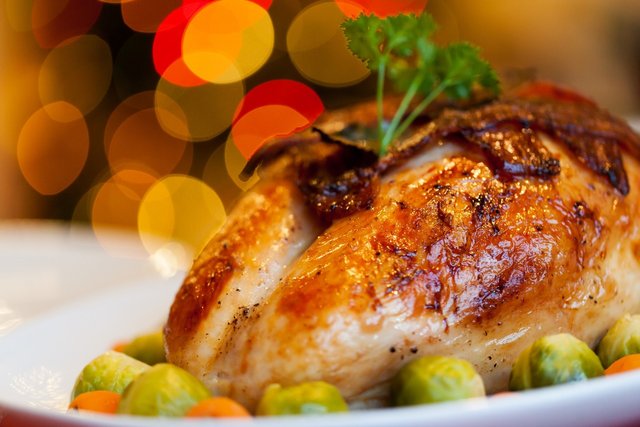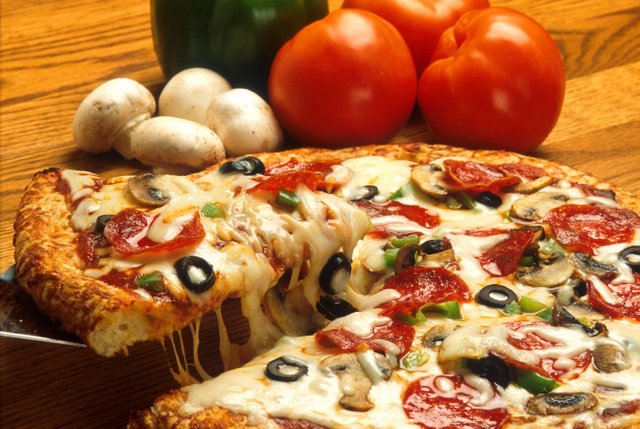Photography Food Article
Hey Frnd ..
My Name Is Ahmed & You Are In Now BunNy CommuNity & Today We Talk About Foods Article And Info About Foods ..
So Lets Talk ..

- These assays are based on species-specific, polyclonal antibodies raised against heat-resistant antigens. The heat-resistant antigens were isolated from raw skeletal muscle tissue of pork and chicken and were found to be immunoreactive even after heating to 120 degrees C for 15 min. The poultry ELISA could detect chicken or turkey at the 126 ppm level, and the pork ELISA could detect pork at the 250 ppm level. The effects of seven different foods and three concentrations of citric acid in 16 adult subjects of each sex were evaluated. The foods were steamed rice, french fries, cheeseburger, cookie, milk chocolate, apple, and rhubarb pie. The volume of saliva was determined by subtracting the initial weight of food from that of the food bolus after subjects had chewed it normally and then spat it into a weighed container, without swallowing.Three experiments are reported on the effects of “taste” or nutrition information on willingness to try novel foods. “Taste” information improved responses to four out of the five foods examined. There was a consistent, but not statistically significant, trend for nutritional information to be effective. In experiment I, conducted with 3- to 8-year-old children in a laboratory setting, and in experiment II, conducted with 10- to 20-year-olds in a cafeteria, there were strong age effects.The fact that the European markets for functional foods generally are less developed, compared to the US and the Japanese markets, has often been attributed to a restrictive and inconsistent health claim legislation in and between the European countries. With the European Parliament's second reading of the main principles of the harmonized regulation COM/2003/0424, this situation is about to change.Between October 1998 and April 2000, 429 food samples were investigated for the presence ofListeria spp. The foodstuffs included 138 ready-to-eat foods (68 traditional hard and semi-hard Portuguese cheeses, 23 salad vegetables and 47 cooked and/or cured meats) and 291 uncooked foods (14 raw vegetables, 65 raw chicken and 212 raw ewe's, cow's or goat's milk). Listeria spp. were recovered from 63 samples (15%). Listeria monocytogenes was present in 39 (9%) samples, Listeria innocua in 12 (3%), Listeria seeligeri in 23 (5%),
europepmc.org
Stability and problems in recovery of fumonisins added to corn-based foods.
PM Scott, GA Lawrence
Journal of AOAC International 77 (2), 541-545, 1994
Because the natural occurrence of fumonisins is so far known almost exclusively in corn, we have limited our investigations on their stability to corn-based foods. In these studies, distinction must be made between real losses, binding, and any matrix-related method problems. Fumonisins B1 (FB1) and B2 (FB2) were about 40% recovered when heated in corn meal at 190 degrees C, about 20-30% recovered when heated in moist corn meal at 190 degrees C, and completely unstable in corn meal at 220 degrees C. Average recoveries of FB1 and FB2 added to blank heated matrixes were 69-107% in control experiments. Baking corn meal muffins spiked with 2.5 micrograms FB1 and FB2/g corn meal at 220 degrees C also resulted in losses of fumonisins. Little or no fumonisins were recovered from corn bran flour when methanol-water (3+ 1) was used as extraction solvent. However, when methanol-borate buffer (pH 9.2)(3+ 1) was used, recoveries averaged 91+/-17 and 84+/-9%, respectively, for FB1 and FB2; and natural contamination of the corn bran flour with FB1 and FB2 at levels of 1.9 and 0.95 microgram/g, respectively, was revealed. Comparable recoveries were observed for 1 brand of a corn bran breakfast cereal, but the binding effect was not seen with a second brand, for which methanol-water (3+ 1) alone was a good extraction solvent. Recoveries of FB1 and FB2 from a mixed cereal for babies were only about 50% with either extraction solvent mixture.

Weight change in relation to intake of sugar and sweet foods before and after weight reducing gastric surgery.
AK Lindroos, L Lissner, L Sjöström
International journal of obesity and related metabolic disorders: journal of the International Association for the Study of Obesity 20 (7), 634-643, 1996
OBJECTIVE:
To test the hypothesis that a diet containing many sweet foods is associated with poor weight loss after gastroplasty.
Total energy and all macronutrients were reduced 2 y after surgery. Sweet foods were less reduced than other foods, resulting in a relative increase of sugar intake. At 2 ya high relative intake of sugar and fat was associated with a low energy intake and a large weight reduction in the gastroplasty group. In the highest quartile of mono+ disaccharide intake (> 142 g) weight loss was 29.9 kg compared to 25.1 kg in lowest quartile (> 72 g). Absolute and relative sugar intake before surgery did not predict weight outcome. At 6 months, ie during a period of active weight reduction, energy intake was significantly related to weight loss.
Gastroplasty patients who continue selecting sweet foods appear to maintain lower energy intakes and lose more weight. However the associations are unlikely to be causal but probably indicative of changes in other aspects of the diet, eg exclusion of regular meals. Since large weight losses are most likely to be associated with low quality diets these results highlight the need for supplementation therapy of gastroplasty patients. Finally the lack of association between presurgical sugar intake and subsequent weight loss brings into question the surgical practice of selectively assigning sweet eaters to gastric bypass.
Because the natural occurrence of fumonisins is so far known almost exclusively in corn, we have limited our investigations on their stability to corn-based foods. In these studies, distinction must be made between real losses, binding, and any matrix-related method problems. Fumonisins B1 (FB1) and B2 (FB2) were about 40% recovered when heated in corn meal at 190 degrees C, about 20-30% recovered when heated in moist corn meal at 190 degrees C, and completely unstable in corn meal at 220 degrees C. Average recoveries of FB1 and FB2 added to blank heated matrixes were 69-107% in control experiments. Baking corn meal muffins spiked with 2.5 micrograms FB1 and FB2/g corn meal at 220 degrees C also resulted in losses of fumonisins. Little or no fumonisins were recovered from corn bran flour when methanol-water (3+ 1) was used as extraction solvent. However, when methanol-borate buffer (pH 9.2)(3+ 1) was used, recoveries averaged 91+/-17 and 84+/-9%, respectively, for FB1 and FB2; and natural contamination of the corn bran flour with FB1 and FB2 at levels of 1.9 and 0.95 microgram/g, respectively, was revealed. Comparable recoveries were observed for 1 brand of a corn bran breakfast cereal, but the binding effect was not seen with a second brand, for which methanol-water (3+ 1) alone was a good extraction solvent. Recoveries of FB1 and FB2 from a mixed cereal for babies were only about 50% with either extraction solvent mixture.
Various representatives of trans unsaturated fatty acids have been detected in plants. The main trans monoenoic acids in ruminants, elaidic acid and vaccenic acid are not found in plants. Most oil seeds used for production of edible fats do not contain any trans fatty acids. Trans fatty acids in non-ruminant animals are derived from food. In adult ruminants, however, trans fatty acids are produced by microbial hydrogenation of linoleic acid and linolenic acid in the rumen; in consequence, a variety of positional and stereoisomers of both cis and trans fatty acids appear in both meat and milk. The total trans content of 5-10% in beef fat is largely trans monoene, mainly 9-trans (elaidic acid), 10-trans and 11-trans (vaccenic acid). The trans fatty acid content of human fat is dependent on the uptake of trans fatty acid from food. The usual content is about 2%, though up to 15% has been recorded. The isomer distribution is similar to that of the trans isomers of butter and margarine. The trans fatty acid content in ruminant products such as milk, butter, cheese, curds and tallow is 5-10%. These products contain nearly all possible stereo-and positional isomers of oleic and linoleic acid. The trans fatty acid content of margarines fluctuates widely according to raw material and process conditions. According to one investigation, an average of 16% of all unsaturated fatty acids in margarines consists of geometrical and positional isomers of the" natural" acids, a similar percentage to that in butter. Diet and health margarines have much lower contents of trans fatty acids. The total trans content of margarines is largely due to trans-18: 1 monoenes. The positional isomers of the trans-monoenes are more evenly distributed in margarine than in butter. Hardened oils do not contain trans fatty acid isomers other than those produced by the microflora of ruminants.
europepmc.org
Weight change in relation to intake of sugar and sweet foods before and after weight reducing gastric surgery.
International journal of obesity and related metabolic disorders: journal of the International Association for the Study of Obesity 20 (7),
To test the hypothesis that a diet containing many sweet foods is associated with poor weight loss after gastroplasty.
Total energy and all macronutrients were reduced 2 y after surgery. Sweet foods were less reduced than other foods, resulting in a relative increase of sugar intake. At 2 ya high relative intake of sugar and fat was associated with a low energy intake and a large weight reduction in the gastroplasty group. In the highest quartile of mono+ disaccharide intake (> 142 g) weight loss was 29.9 kg compared to 25.1 kg in lowest quartile (> 72 g). Absolute and relative sugar intake before surgery did not predict weight outcome. At 6 months, ie during a period of active weight reduction, energy intake was significantly related to weight loss.
CONCLUSION:
Gastroplasty patients who continue selecting sweet foods appear to maintain lower energy intakes and lose more weight. However the associations are unlikely to be causal but probably indicative of changes in other aspects of the diet, eg exclusion of regular meals. Since large weight losses are most likely to be associated with low quality diets these results highlight the need for supplementation therapy of gastroplasty patients. Finally the lack of association between presurgical sugar intake and subsequent weight loss brings into question the surgical practice of selectively assigning sweet eaters to gastric bypass.
Prospective appraisal of complaints of adverse reactions to foods in children during the first 3 years of life
S Allan Bock
Pediatrics 79 (5), 683-688, 1987
To examine the natural history of adverse reactions to foods, 480 children were followed prospectively from birth to their third birthdays. Foods thought to be causing symptoms were evaluated by elimination of suspected foods, open challenges, and double-blind food challenges. Foods producing symptoms were reintroduced into the diet at 1- to 3-month intervals until the symptoms no longer occurred. Of the 480 children completing the study, 28% were thought to have symptoms produced during food ingestion, but in only 8% were these reactions reproduced (excluding fruit and fruit juices). During the first year of life 80% of the initial complaints occurred. The most striking finding was the brief duration during which reactions could be reproduced. The majority of foods were replaced in the diet within 9 months of their incrimination. A long list of foods was reported to produce many symptoms, but only a few foods reproducibly evoked gastrointestinal and skin symptoms, with respiratory symptoms being infrequent. Of great interest was that 75 children were reported to react to fruit or fruit juice, and 56 of these children had reproducible symptoms. This study has found that most food reactions occur during the first year of life, but rechallenge at regular intervals has shown that the food can be reintroduced into the diet by the third year without risk.

- Ready-to-eat foods and beverages were purchased from street food sellers in Zaria, Nigeria for microbiological analysis. Total aerobic organisms were cultured on plate count agar, Staphylococcus aureus was isolated on Baird Parker agar, Bacillus cereus on mannitol-egg yolk-polymyxin agar and Salmonella on Salmonella-Shigella agar after enrichment in tetrathionate broth.Using the Constant Loading Rate Texture Testing instrument it was possible to extract from the deformation/time and force/time curves together with the sound emitted from the samples during the test, those variables included in both the definition of crispness and the assumption that in the case of friable foods crispness may be regarded.
ThNkew
iTx Bunny 😎